
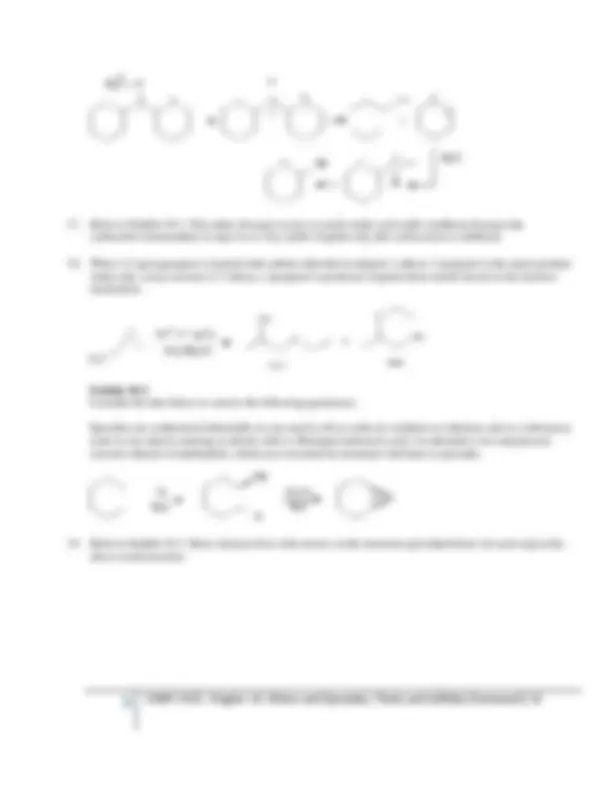
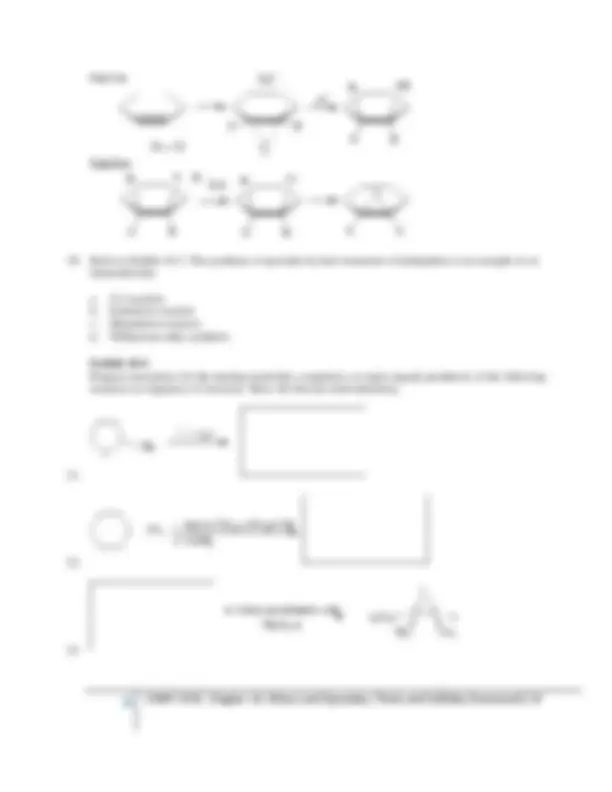
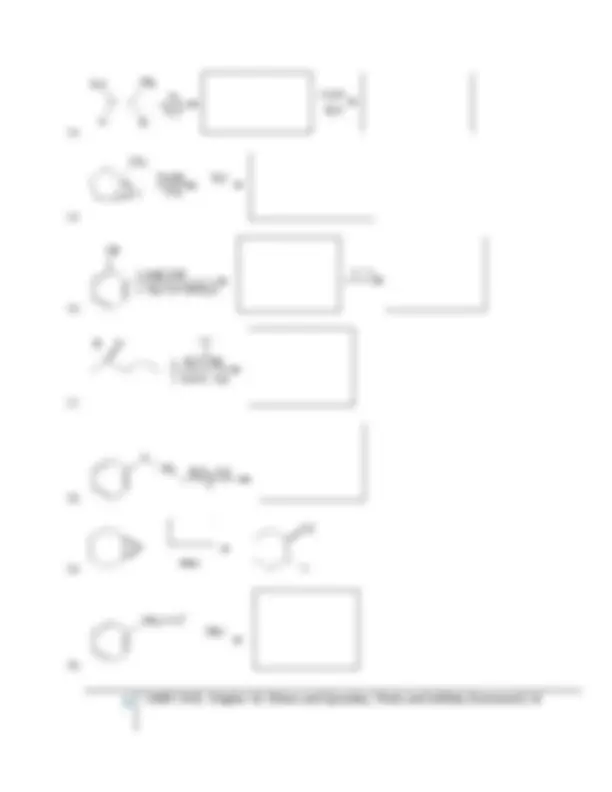
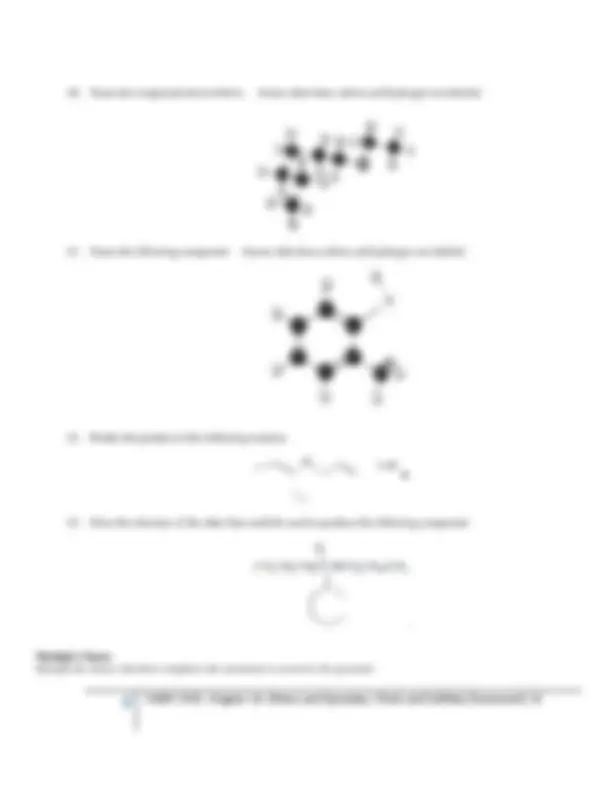
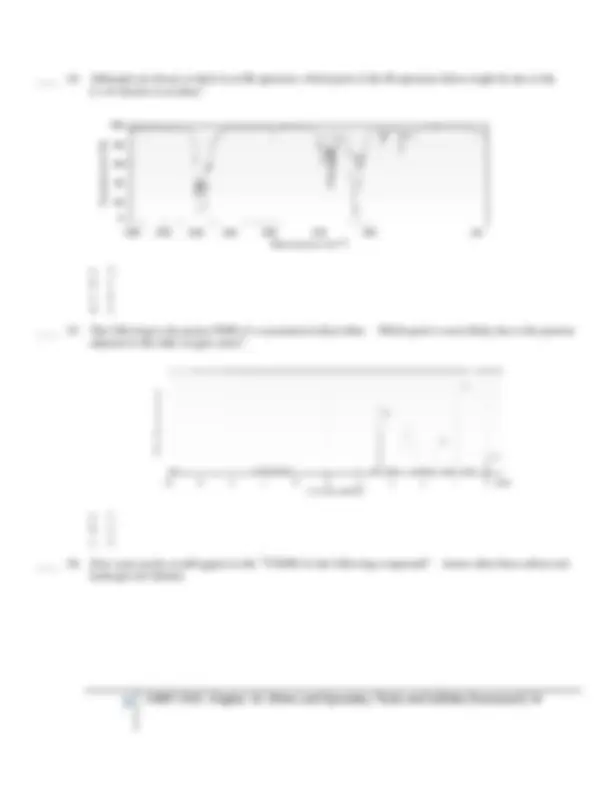
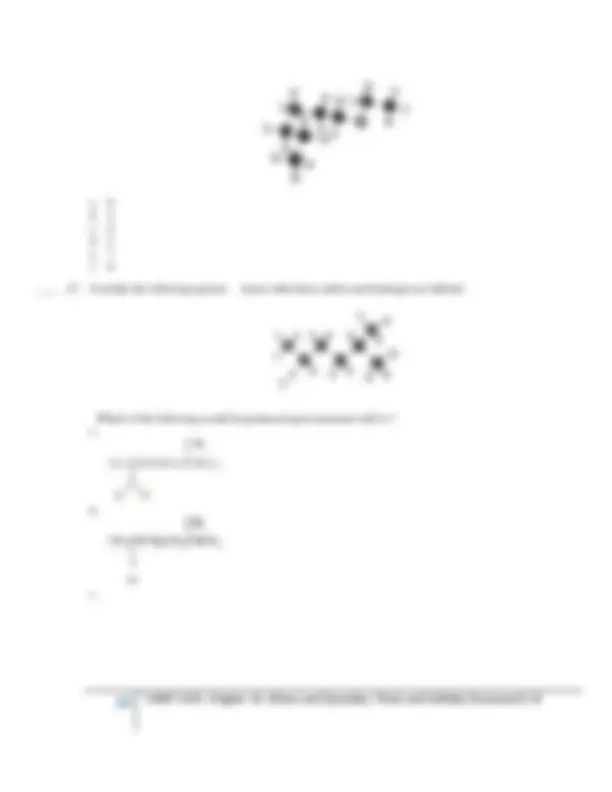
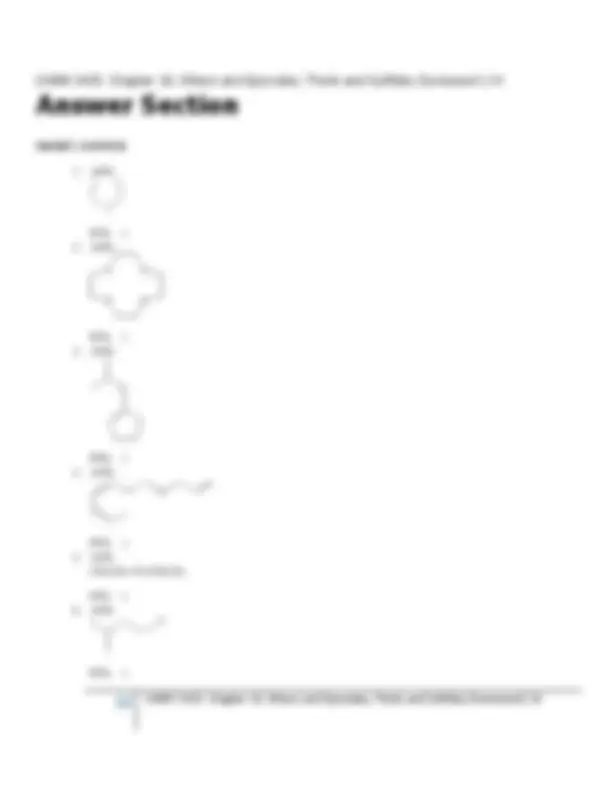
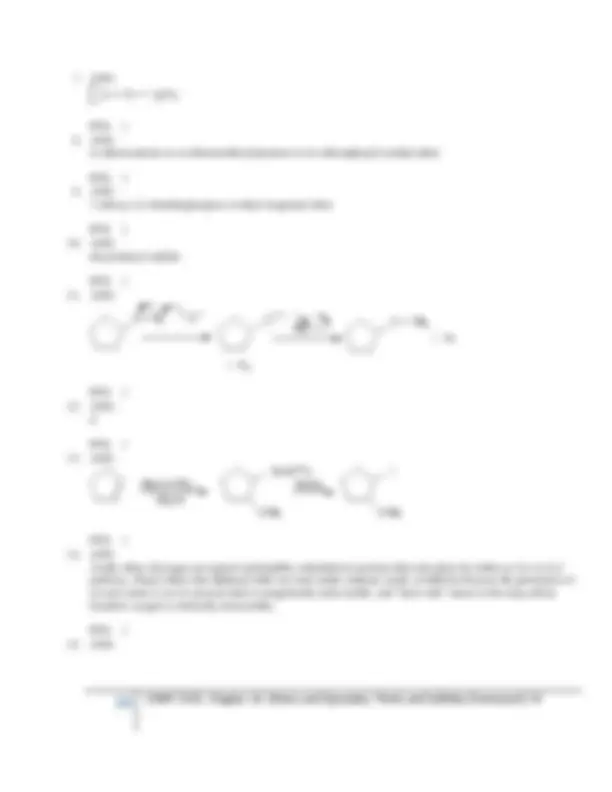
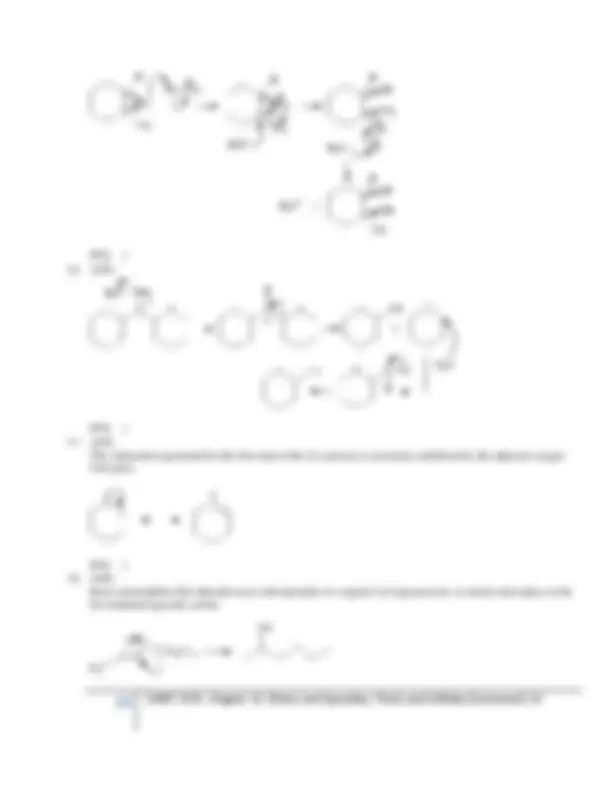
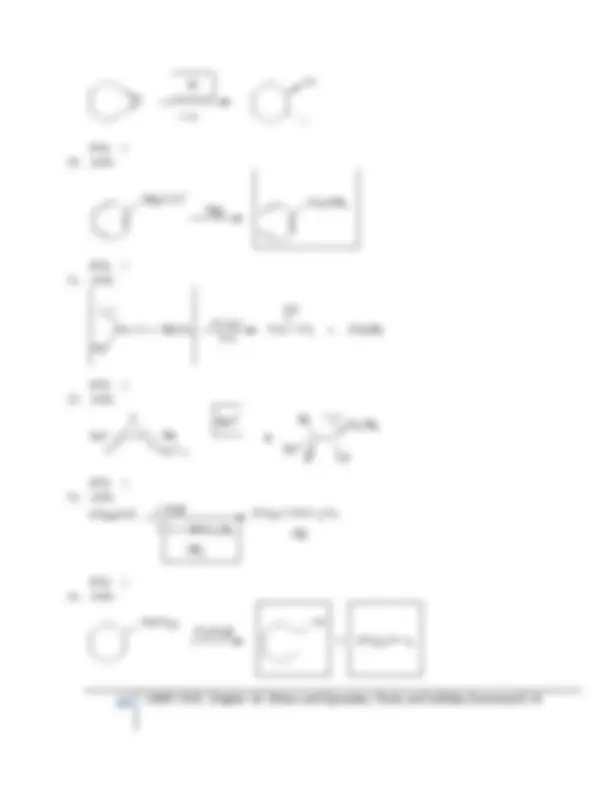
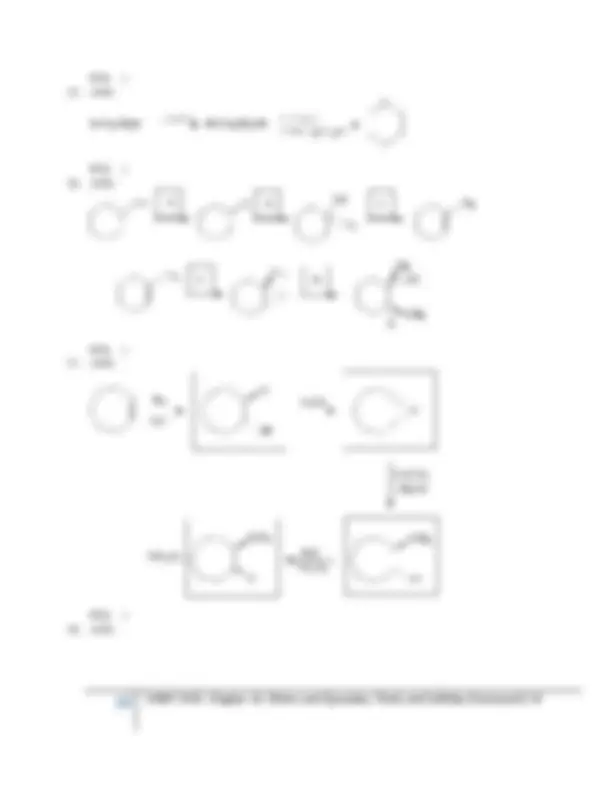
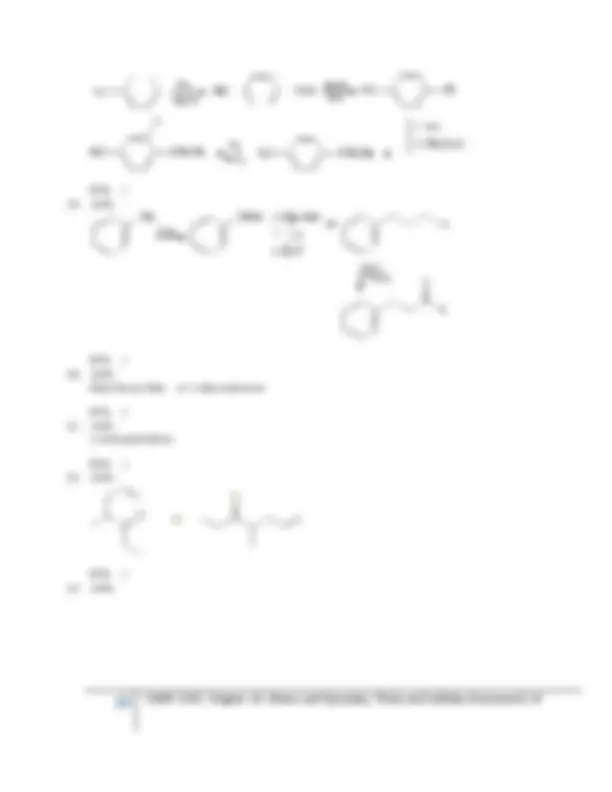
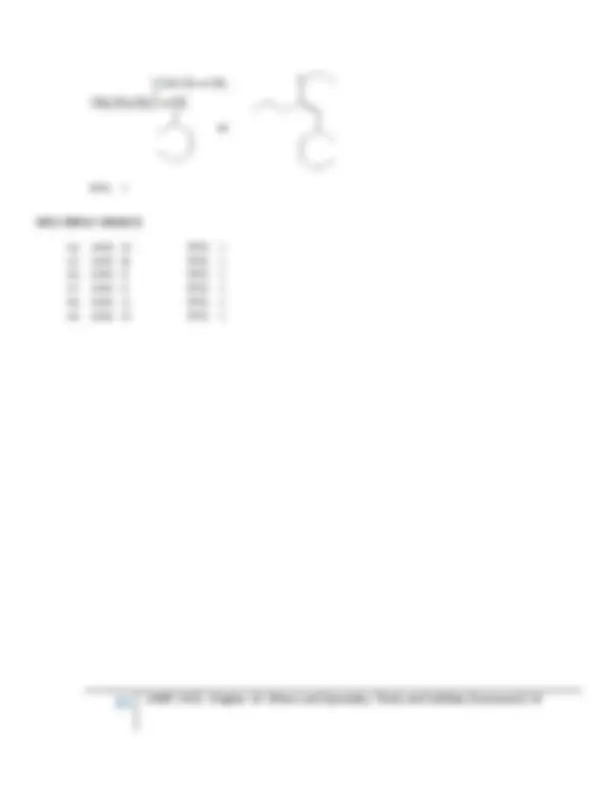


Study with the several resources on Docsity

Earn points by helping other students or get them with a premium plan


Prepare for your exams
Study with the several resources on Docsity

Earn points to download
Earn points by helping other students or get them with a premium plan
Community
Ask the community for help and clear up your study doubts
Discover the best universities in your country according to Docsity users
Free resources
Download our free guides on studying techniques, anxiety management strategies, and thesis advice from Docsity tutors
Choose the best reagent for carrying out the following reactions from the list below. Place the letter of the reagent(s) in the box over the reaction arrow.
Typology: Exams
1 / 21

This page cannot be seen from the preview
Don't miss anything!














Short Answer
Drawing Instructions : Draw structures corresponding to each of the given names.
IUPAC Naming Instructions : Provide proper IUPAC names.
Exhibit 18- Consider the reaction below to answer the following question(s).
a. an E1 process b. an SN 1 process c. an E2 process d. an SN 2 process
Exhibit 18- Consider the data below to answer the following question(s).
Acetals are a special class of ethers which have two ether linkages at a single carbon. Tetrahydropyranyl ethers are acetals that are easily cleaved with mild aqueous acids at room temperature to yield alcohols.
a. SN 1 reaction b. hydrolysis reaction c. dehydration reaction d. Williamson ether synthesis
Exhibit 18- Propose structure(s) for the starting material(s), reagent(s), or major organic product(s) of the following reactions or sequences of reactions. Show all relevant stereochemistry.
A. NaH, then CH 3 I B. NaOCH 3 , CH 3 OH
C. m - ClC 6 H 4 CO 3 H D. CH 3 MgBr in ether, then H 3 O+
E. warm H 2 SO 4 /H 2 O F. Hg(O 2 CCF 3 ) 2 , CH 3 OH
G. H 2 /Pd H. PCC, CH 2 Cl 2
I. Cl 2 , H 2 O J. LiAlH 4 in ether, then H 3 O+
Multiple Choice Identify the choice that best completes the statement or answers the question.
a. 6 b. 4 c. 9 d. 5 e. 7 f. 8
____ 47. Consider the following species. Atoms other than carbon and hydrogen are labeled.
Which of the following would be produced upon treatment with I 2 ,? a.
b.
c.
d.
____ 48. What is the product formed upon treatment of the following substance with hydrogen peroxide at room temperature, followed by treatment with a peroxyacid? Atoms other than carbon and hydrogen are labeled.
a.
b.
c.
d.
____ 49. Which of the following will undergo rearrangement upon heating? a. 2-pentenyl phenyl ether
m -chloroanisole or m -chloromethoxybenzene or ( m -chlorophenyl) methyl ether
PTS: 1
PTS: 1
PTS: 1
d
PTS: 1
Acidic ether cleavages are typical nucleophilic substitution reactions that take place by either an SN 1 or SN 2 pathway. Diaryl ethers like diphenyl ether are inert under ordinary acidic conditions because the generation of an aryl cation is an SN 1 process that is energetically unfavorable, and "back-side" attack at the ring carbon bound to oxygen is sterically unfavorable.
PTS: 1
d
PTS: 1
Ethyl hexyl ether or 1-ethyoxyhexane
PTS: 1
PTS: 1